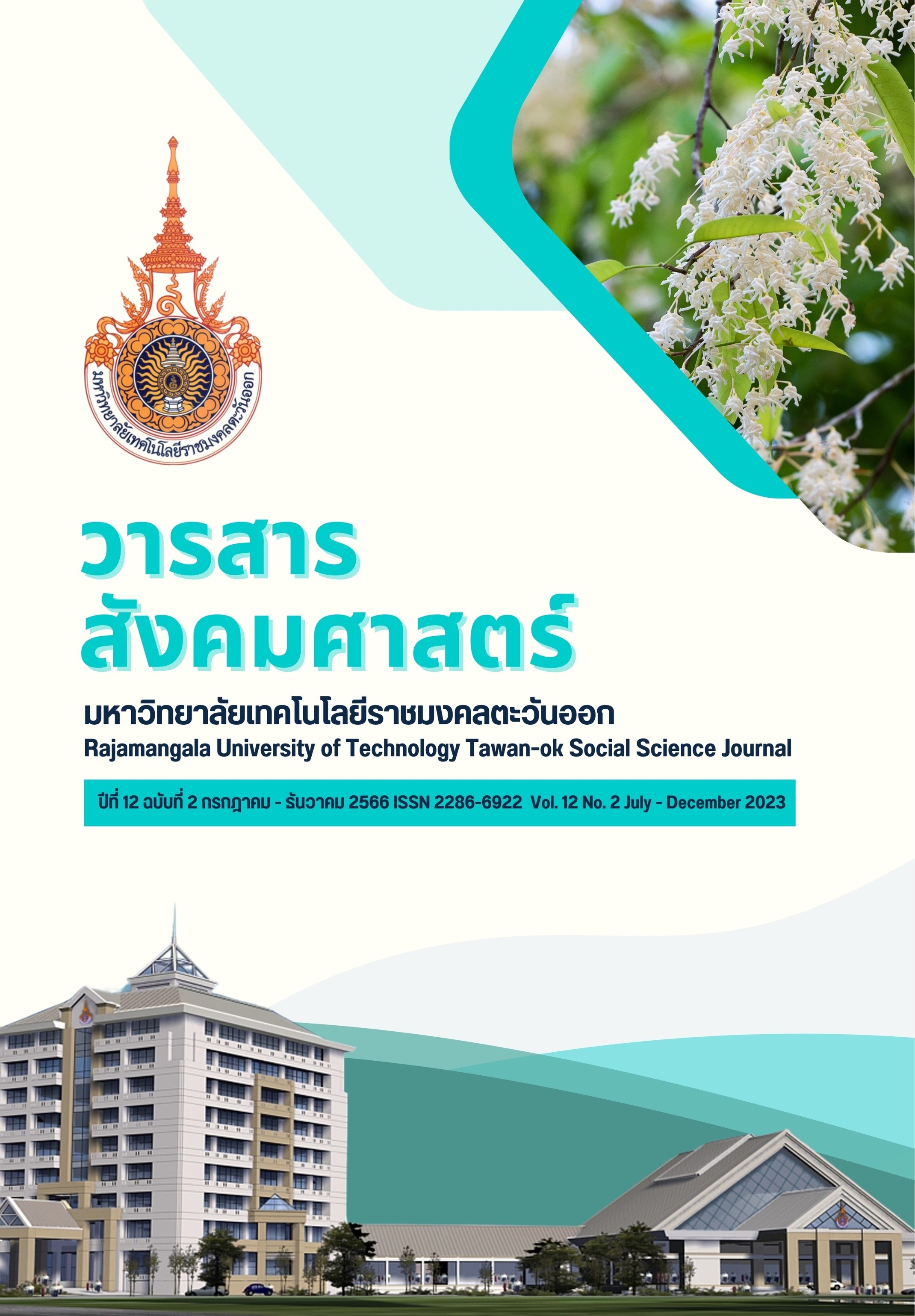The studies of influencing factors to technology acceptance use in online instruction
Main Article Content
Abstract
The purpose of this study was to study the factors that influence technology acceptance in online-learning. It led to plan online-learning policy for maximum efficiency by literature review in various countries. It was concluded that factors affected to technology acceptance in online-learning included perceived usefulness, perceived ease of use, attitude, quality factors, subject norm, instructors characteristics, previous experience and perceived behavior control.
Article Details

This work is licensed under a Creative Commons Attribution-NonCommercial-NoDerivatives 4.0 International License.
References
Ali, Ab., Fadzli, A., Abdullah, WW. (2014). Acceptance of the blog as a religious medium among Malaysian high school students. Proceeding of the International Conference on Arabic Studies and Islamic Civilization iCasic 2014, Kuala Lumpur, MALAYSIA.
Ajzen, I. (1991). The theory of planned behavior. Organizational behavior and human decision processes, 50(2), 179-211.
Bangkokbiznews. (2020). 4 ช่องทาง 'เรียนออนไลน์' เด็กๆ ยุคโควิดต้องพร้อมสู่ New Normal. Retrieved 1 March 2021, from https://www.Bangkokbiznews.com/news/detail/880901
Davis, F. D. (1989). Perceived usefulness, perceived ease of use, and user acceptance of information technology. MIS quarterly, 319-340.
Davis, F. D., Bagozzi, R. P., & Warshaw, P. R. (1989). User acceptance of computer technology: A comparison of two theoretical models. Management science, 35(8), 982-1003.
Elkaseh, A. M., Wong, K. W., & Fung, C. C. (2016). Perceived ease of use and perceived usefulness of social media for e-learning in Libyan higher education: A structural equation modeling analysis. International Journal of Information and Education Technology, 6(3), 192.
Farahat, T. (2012). Applying the technology acceptance model to online learning in the Egyptian universities. Procedia-Social and Behavioral Sciences, 64, 95-104.
Haryaka, U., Agus, F., & Kridalaksana, A. H. (2017). User satisfaction model for e-learning using smartphone. Procedia computer science, 116, 373-380.
Hartley, K., & Bendixen, L. D. (2001). Educational research in the Internet age: Examining the role of individual characteristics. Educational researcher, 30(9), 22-26.
Hussein, Z. (2017). Leading to intention: The role of attitude in relation to technology acceptance model in e-learning. Procedia Computer Science, 105, 159-164.
Johari, N., Mustaffha, H., Ripain, N., Zulkifli, A., & Ahmad, N. W. (2015). Student acceptance of Online Learning in KUIS. The International Conference on Economics and Banking (iceb-15).
Kulsawat, T. (2014). The Acceptance of E-Learning among Undergraduate Students of Burapha University. Veridian E-Journal International Humanities, Social Sciences and Arts, 7(1), 308-320.
Lazim, C., Ismail, N. D. B., & Tazilah, M. (2021). Application of technology acceptance model (TAM) towards online learning during covid-19 pandemic: Accounting students perspective. Int. J. Bus. Econ. Law, 24, 13-20.
Lee, B.-C., Yoon, J.-O., & Lee, I. (2009). Learners’ acceptance of e-learning in South Korea: Theories and results. Computers & education, 53(4), 1320-1329.
Liaw, S.-S., Huang, H.-M., & Chen, G.-D. (2007). An activity-theoretical approach to investigate learners’ factors toward e-learning systems. Computers in Human Behavior, 23(4), 1906-1920.
Liu, I.-F., Chen, M. C., & Sun, Y. (2006). The design of a web-based learning platform: A case study in Taiwan. The 2006 conference on Learning by Effective Utilization of Technologies: Facilitating Intercultural Understanding.
Liu, I.-F., Chen, M. C., Sun, Y. S., Wible, D., & Kuo, C.-H. (2010). Extending the TAM model to explore the factors that affect intention to use an online learning community. Computers & education, 54(2), 600-610.
Malhotra, Y., & Galletta, D. F. (1999). Extending the technology acceptance model to account for social influence: Theoretical bases and empirical validation. The 32nd Annual Hawaii International Conference on Systems Sciences. 1999.
Ndubisi, N. (2006). Factors of online learning adoption: A comparative juxtaposition of the theory of planned behaviour and the technology acceptance model. International Journal on E-learning, 5(4), 571-591.
Nonaka, I., & Nishiguchi, T. (2001). Knowledge emergence: Social, technical, and evolutionary dimensions of knowledge creation. Oxford University Press.
Park, S. Y. (2009). An analysis of the technology acceptance model in understanding university students' behavioral intention to use e-learning. Journal of Educational Technology & Society, 12(3), 150-162.
Pérez Cereijo, M. V., Young, J., & Wilhelm, R. W. (2001). Factors Facilitating Student Participation in Asynchronous Web-Based Courses. Journal of Computing in Teacher Education, 18(1), 32-39.
Taat, M. S., & Francis, A. (2020). Factors Influencing the Students' Acceptance of E-Learning at Teacher Education Institute: An Exploratory Study in Malaysia. International Journal of Higher Education, 9(1), 133-141.
World Health Organization Thailand. (2020). Retrieved 1 March 2021, Coronavirus disease (COVID-19) questions and answers. https://www.who.int/thailand/emergencies/novel-coronavirus-2019/q-a-on-covid-19


